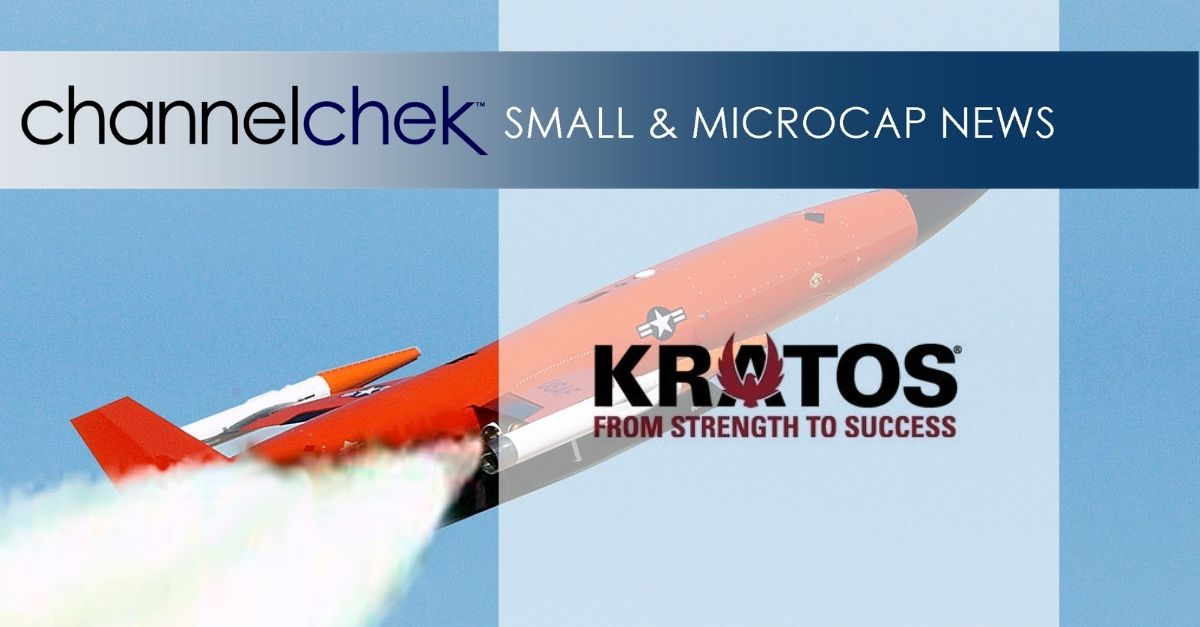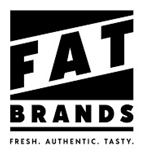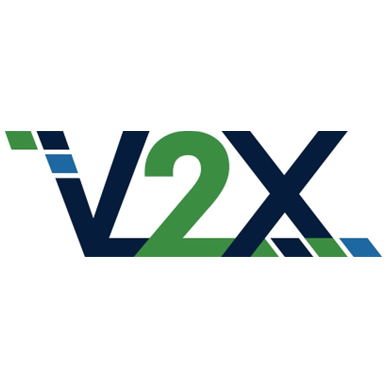
Research News and Market Data on KTOS
Together the companies showcase technology capable of supporting multi-orbit, multi-mission satellite ground operations
SAN DIEGO and LUXEMBOURG, April 17, 2024 (GLOBE NEWSWIRE) — Kratos Defense & Security Solutions, Inc. (Nasdaq: KTOS), a technology company in the defense, national security and global markets, and SES, a leader in global content connectivity solutions, successfully executed a fully virtualized satellite communications (SATCOM) ground system demonstration for the U.S. Army’s Combat Capabilities Development Command, both announced today.
Kratos and SES successfully showed a flexible network architecture facilitating simultaneous communication pathways for resilient SATCOM. This virtualized and containerized architecture enables soldiers to position their radio frequency (RF) hardware and software-defined hubs anywhere globally. In an industry first, the demonstration showed seamless operation supporting satellites in Medium Earth Orbit (MEO) on a “make-before-break” mode over SES’s O3b MEO satellite network. Make-before-break is an essential capability for MEO and LEO satellite constellations referring to the ability to transfer communication sessions while the user transverses the coverage areas of different satellites.
The demonstration employed a remote terminal in Port St. Lucie, U.S., and a gateway in Lima, Peru, which connected to a software-defined Kratos OpenSpace® vStar hub system located more than 3,000 miles away in Virginia, U.S., all orchestrated and conducted over SES’s O3b satellite network.
Military satellite communications (MILSATCOM) networks increasingly will need to support multiple missions and employ multi-orbit satellite networks while reacting far more quickly than today’s hardware-based ground system. Kratos OpenSpace® Platform is the industry’s only commercially available, fully software-defined satellite ground system that provides the necessary reliability and agility needed for these modern operations. System efficiency was further enhanced by hosting the container-based OpenSpace hub on public cloud resources provided by SES.
Chris Badgett, Vice President of Technology for Kratos Space, said, “As employed in this demonstration, OpenSpace is the first to leverage containers to orchestrate the transfer of communication sessions in a standards-based, open, COTS platform environment. Using a containerized architecture for this make-before-break handover is a significant advancement in SATCOM technology and shows how Kratos is leading SATCOM ground modernization by using commercial capabilities, including software and generic x86 servers, to streamline and enhance hub, gateway and remote terminals.”
Saba Wehbe, Senior Vice President, Service Engineering and Delivery of SES, said, “SES’s software reconfigurable approach will future-proof ground systems and simplify the interoperability of multi-constellation, multi-orbit, multi-platform satellite services as well as standards-based integration with terrestrial networks. Showcasing a resilient software-defined network, characterized by the flexibility and agility critical to the U.S. Department of Defense (DoD) SATCOM modernization efforts, reinforces the importance of these features.”
Funding for this project was through the Network Cross-Functional Team (N-CFT) established by the Army Futures Command.
About Kratos OpenSpace
Kratos’ OpenSpace family of solutions enables the digital transformation of satellite ground systems to become a more dynamic and powerful part of the space network. The family consists of three product lines: OpenSpace SpectralNet for converting satellite RF signals to be used in digital environments; OpenSpace quantum products, which are virtual versions of traditional hardware components; and the OpenSpace Platform, the first commercially available, fully orchestrated, software-defined ground system. These three OpenSpace lines enable satellite operators and other service providers to implement digital operations at their own pace and in ways that meet their unique mission goals and business models. For more information about the OpenSpace family visit http://KratosDefense.com/OpenSpace.
About Kratos Defense & Security Solutions
Kratos Defense & Security Solutions, Inc. (NASDAQ: KTOS) is a technology, products, system and software company addressing the defense, national security, and commercial markets. Kratos makes true internally funded research, development, capital and other investments, to rapidly develop, produce and field solutions that address our customers’ mission critical needs and requirements. At Kratos, affordability is a technology, and we seek to utilize proven, leading edge approaches and technology, not unproven bleeding edge approaches or technology, with Kratos’ approach designed to reduce cost, schedule and risk, enabling us to be first to market with cost effective solutions. We believe that Kratos is known as an innovative disruptive change agent in the industry, a company that is an expert in designing products and systems up front for successful rapid, large quantity, low cost future manufacturing which is a value add competitive differentiator for our large traditional prime system integrator partners and also to our government and commercial customers. Kratos intends to pursue program and contract opportunities as the prime or lead contractor when we believe that our probability of win (PWin) is high and any investment required by Kratos is within our capital resource comfort level. We intend to partner and team with a large, traditional system integrator when our assessment of PWin is greater or required investment is beyond Kratos’ comfort level. Kratos’ primary business areas include virtualized ground systems for satellites and space vehicles including software for command & control (C2) and telemetry, tracking and control (TT&C), jet powered unmanned aerial drone systems, hypersonic vehicles and rocket systems, propulsion systems for drones, missiles, loitering munitions, supersonic systems, space craft and launch systems, C5ISR and microwave electronic products for missile, radar, missile defense, space, satellite, counter UAS, directed energy, communication and other systems, and virtual & augmented reality training systems for the warfighter. For more information, visit www.KratosDefense.com.
About SES
SES has a bold vision to deliver amazing experiences everywhere on earth by distributing the highest quality video content and providing seamless data connectivity services around the world. As a leader in global content connectivity solutions, SES owns and operates the world’s only geosynchronous orbit and medium earth orbit (GEO-MEO) constellation of satellites with the unique combination of global coverage and high performance. By leveraging its vast and intelligent, cloud-enabled network, SES delivers high-quality connectivity solutions anywhere on land, at sea or in the air, and is a trusted partner to the world’s leading telecommunications companies, mobile network operators, governments, connectivity and cloud service providers, broadcasters, video platform operators and content owners. SES’s video network carries over 6,400 channels, reaching 369 million households, delivering managed media services for both linear and non-linear content. The company is headquartered in Luxembourg and listed on Paris and Luxembourg stock exchanges (Ticker: SESG). Further information is available at: www.ses.com.
Notice Regarding Forward-Looking Statements
Certain statements in this press release may constitute “forward-looking statements” within the meaning of the Private Securities Litigation Reform Act of 1995. These forward-looking statements are made on the basis of the current beliefs, expectations and assumptions of the management of Kratos and are subject to significant risks and uncertainty. Investors are cautioned not to place undue reliance on any such forward-looking statements. All such forward-looking statements speak only as of the date they are made, and Kratos undertakes no obligation to update or revise these statements, whether as a result of new information, future events or otherwise. Although Kratos believes that the expectations reflected in these forward-looking statements are reasonable, these statements involve many risks and uncertainties that may cause actual results to differ materially from what may be expressed or implied in these forward-looking statements. For a further discussion of risks and uncertainties that could cause actual results to differ from those expressed in these forward-looking statements, as well as risks relating to the business of Kratos in general, see the risk disclosures in the Annual Report on Form 10-K of Kratos for the year ended December 31, 2023, and in subsequent reports on Forms 10-Q and 8-K and other filings made with the SEC by Kratos.
For further information, please contact:
For Kratos: Yolanda White
858-812-7302 Direct
Investor Information:
877-934-4687
investor@kratosdefense.com
For SES: Suzanne Ong
External Communications SES
Tel. +352 710 725 500
suzanne.ong@ses.com



























